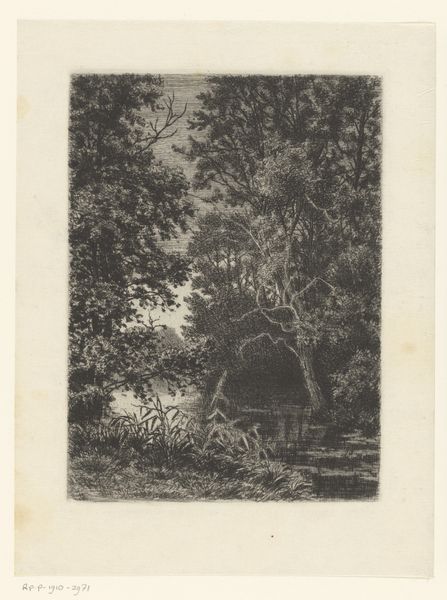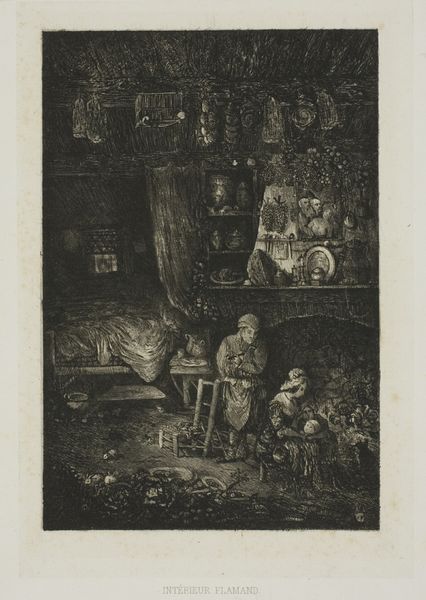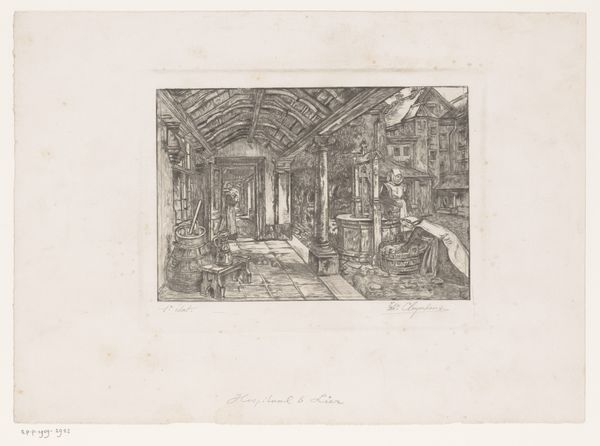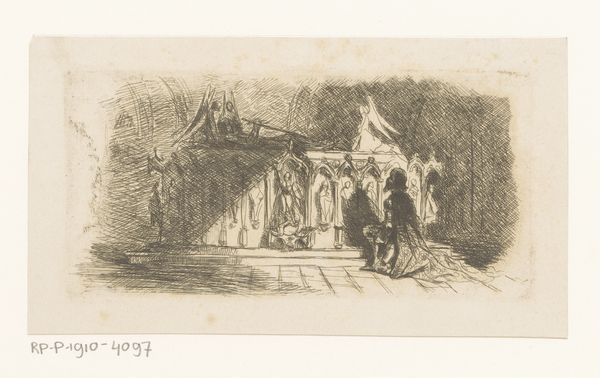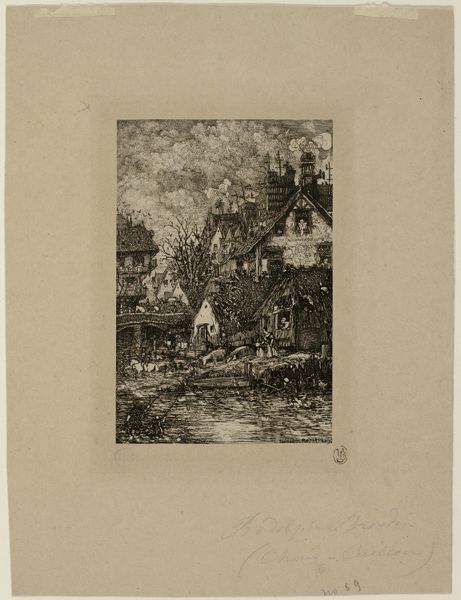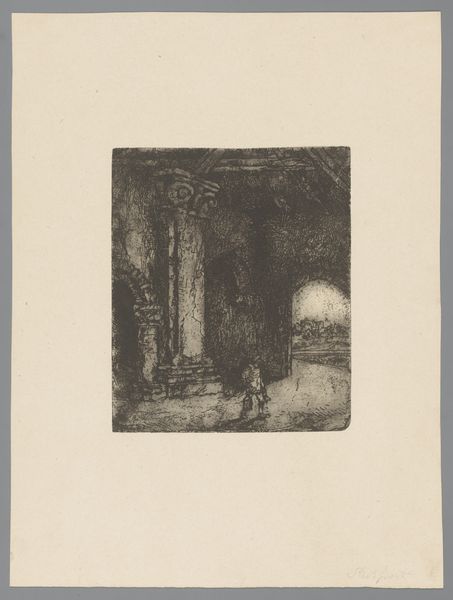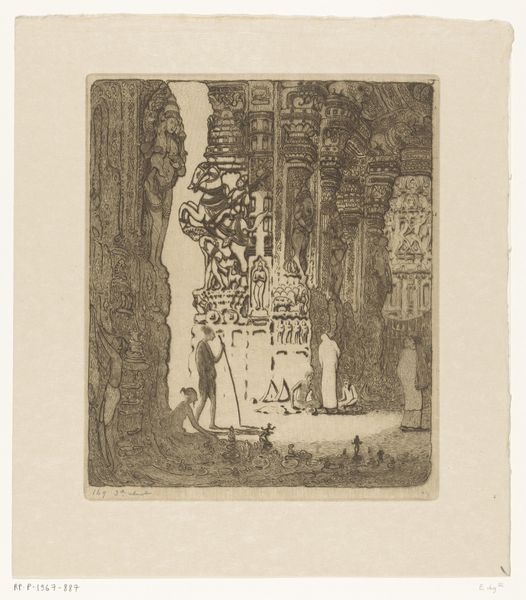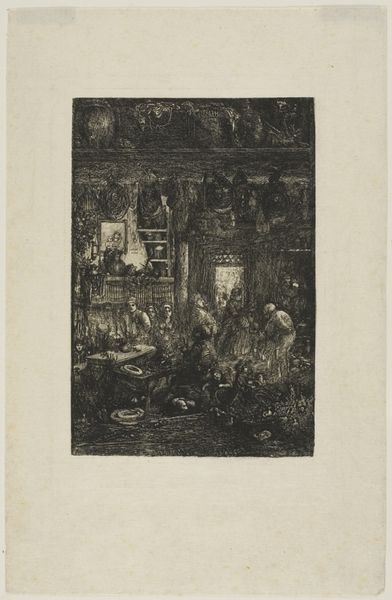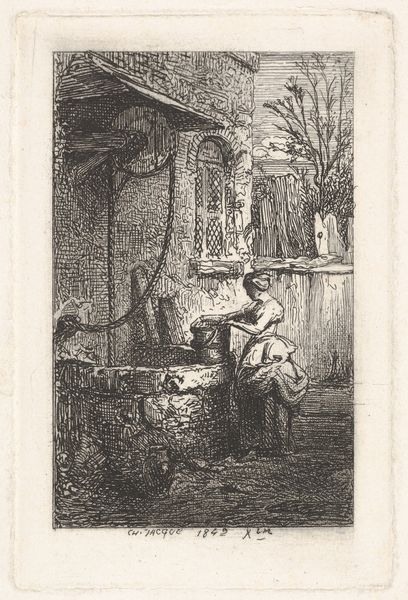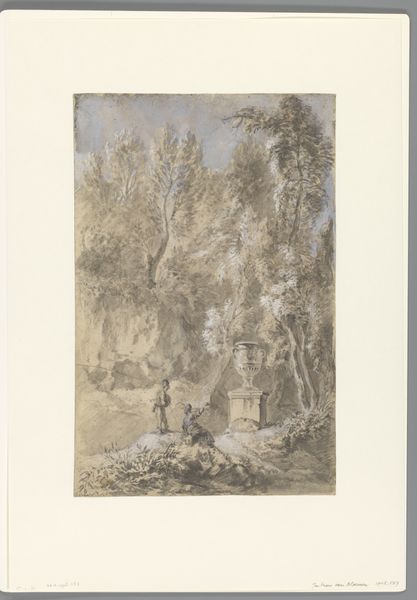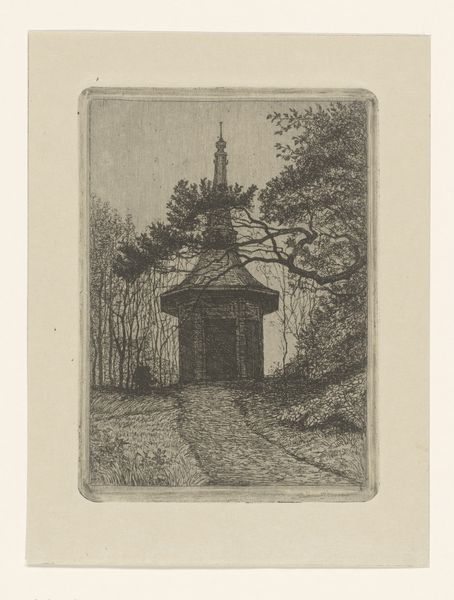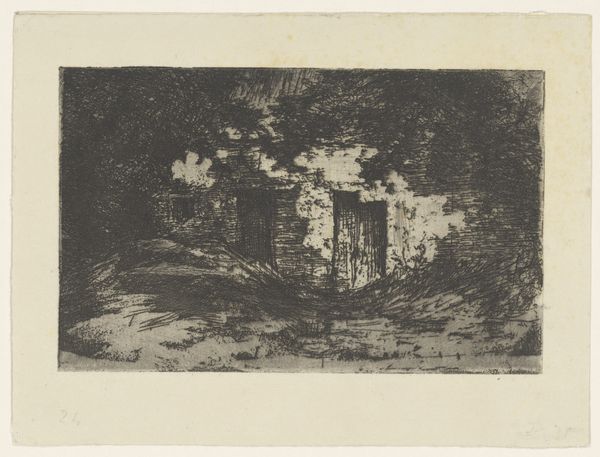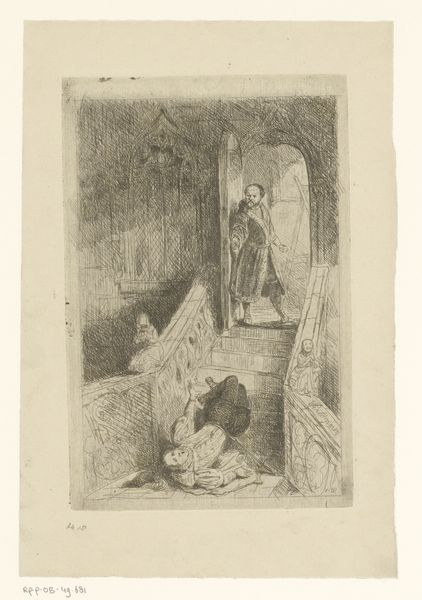
drawing, pencil
#
pencil drawn
#
drawing
#
pencil sketch
#
charcoal drawing
#
pencil drawing
#
pencil
#
realism
Dimensions: height 455 mm, width 287 mm
Copyright: Rijks Museum: Open Domain
Editor: This intriguing pencil drawing, "Atelier van Hendrik Willem Mesdag," attributed to Barbara Elisabeth van Houten between 1872 and 1950, presents a glimpse into what seems to be an artist's workspace. It's fascinating how a seemingly simple medium like pencil can capture so much detail, from the draped fabric to the miniature ship. What stands out to you? Curator: What captivates me here is not just the subject, but the materiality of the drawing itself. Consider the availability and accessibility of pencil and paper versus oil paints during this period. This choice already speaks to a democratization of art-making. A peek behind the curtain—literally, with the drape depicted—into the world of artistic production, hinting at the artist's labor and the context in which their work is produced. Editor: So you're saying that by using pencil, the artist makes art more accessible, democratizing the artistic process itself? Curator: Precisely! Furthermore, let’s consider what’s being depicted: an artist's atelier. By drawing an artist’s space—possibly her own—van Houten reflects on the conditions of artistic creation. What do we make of the items present: the ship model, the drapery? These all signify status and artistic interests, but equally materials subject to exchange in the art market. Editor: The objects tell a story of trade and status? I hadn’t thought of that. I was so focused on the 'artist's inner world' cliché, I missed how this picture highlights the connection to materials and their social context. Curator: Exactly! And thinking about the drawing’s physicality, each line is a record of labour, a tangible connection to the artist’s hand and their working conditions. The smudges, the variations in pressure, these all offer clues to the physical act of creation. It's not just an image; it's evidence of a process, challenging notions of art as something purely aesthetic. Editor: This makes me think about the labour and the kind of pencil that was available at the time. And that in itself is kind of, maybe beautiful or kind of interesting in its own right. Curator: Absolutely. By concentrating on how art is produced, who gets to produce it, and the means by which it's circulated and consumed, we can challenge preconceived notions of artistic value and open ourselves to more critical appreciation.
Comments
No comments
Be the first to comment and join the conversation on the ultimate creative platform.
